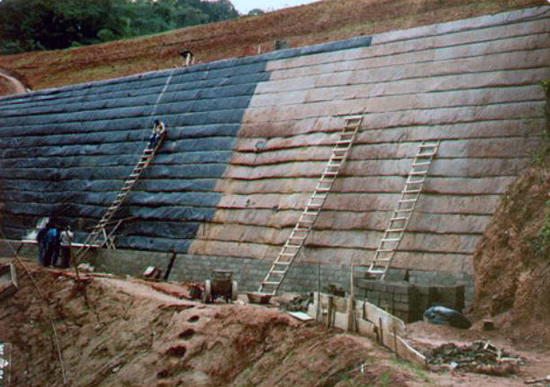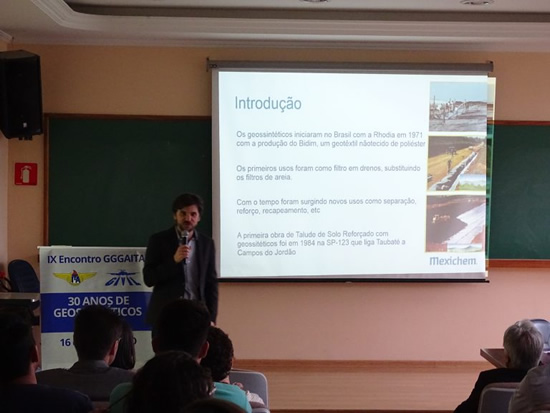
 By Bruno Pedroni – When the Sao Paulo, Brazil-based Technological Institute of Aeronautics geosynthetics group (GGGAITA) celebrated its 30th anniversary, one of the highlights was Bidim’s presentation on a 30-year-old geosynthetic-reinforced soil wall. The 1986 project was built along the SP-123 roadway, which connects the cities of Taubaté and Campos do Jordao in the Vale do Paraíba (SP).
By Bruno Pedroni – When the Sao Paulo, Brazil-based Technological Institute of Aeronautics geosynthetics group (GGGAITA) celebrated its 30th anniversary, one of the highlights was Bidim’s presentation on a 30-year-old geosynthetic-reinforced soil wall. The 1986 project was built along the SP-123 roadway, which connects the cities of Taubaté and Campos do Jordao in the Vale do Paraíba (SP).
Bidim’s Demetrius Guimarães delivered the presentation, showing how not only was project an important story for historical records of geosynthetics in Brazil but also to the investment by the field in getting geosynthetics into infrastructure. Bidim geotextiles were being produced as far back as 1971, but it took 15 years to get this type of project designed and approved.
GEOSYNTHETIC-REINFORCED SOIL IN BRAZIL
The first uses of geotextiles in the country were as filter drains to replace sand filters. After a number of years, separation, reinforcement, capping, and other functional uses were adopted in geotechnical works.
This first solo embankment to utilize geosynthetic-reinforced soil with geotextile was located at km 35 along the SP-123 route. The work aimed to recover a slope that had failed under heavy rains, disrupting the transit corridor.
The total slope height to be reinforced was 30 m and its width was approximately 50 m. The slope was rehabilitation with three tiers: two non-reinforced zones and a central reinforced tier.
The geosynthetic-reinforced soil slope was 10 m in height. Its reinforced base was 50 m long. Two geotextiles were used: a nonwoven polyester geotextile with a strength of 22kN/m and a woven polypropylene geotextile of 22kN/m. Each was used in half of the wall. (See site photo.) The wrapped soil section were 60 cm high and 7 m long.
Guimarães explained that both geotextiles (woven and non-woven) worked well for the application. In using both, it provided a case for the use of each in reinforced infrastructure works, making the project not just highly effective as a piece of engineering but an educational one too.
Settlement of the system was as expected, with less than 10 cm detected at the most critical point. The polyester geotextiles performed particularly well against creep.
The work was considered a success and paved the way for this new approach in Brazil. The installation also captured the interest of many engineering and researchers at the time, leading to several similar designs to be proposed; theses and doctoral publications in university engineering programs; and various calculation methodologies.
**
For other stories from the Brazilian geosynthetics market, visit our Portuguese-language affiliate,www.geosynthetica.net.br. Latin American market information can be found at www.geosynthetica.com.es.











